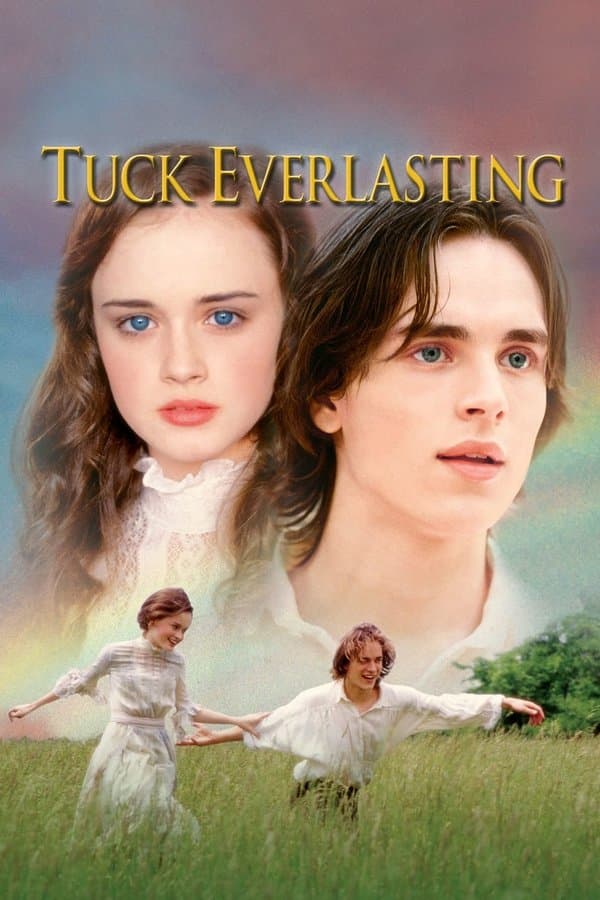
Tuck Everlasting
2002 • Drama, Family, Fantasy, Romance • PG
Teenager Winnie Foster is growing up in a small rural town in 1914 with her loving but overprotective parents, but Winnie longs for a life of greater freedom and adventure.
Runtime: 1h 30m
Why you should read the novel
By delving into Natalie Babbitt's 'Tuck Everlasting', readers gain access to the depth and nuance of a literary classic that invites profound reflection. The book weaves philosophy and adventure through evocative prose, allowing the imagination to paint vivid scenes far beyond what a visual adaptation can provide. Babbitt's writing gently sparks contemplation about life, death, and the choices we make, offering a richer and more personal journey.
The novel presents characters in greater psychological depth, giving readers a chance to understand their hopes, fears, and motivations in a way the film only hints at. Through Winnie Foster's eyes, we experience the intricacies of growing up and the allure of the unknown. Each chapter builds emotional resonance, making the story’s lessons and themes even more impactful.
Moreover, reading 'Tuck Everlasting' allows for a slower, more reflective engagement with its timeless questions. Readers can pause to ponder the meaning behind the Tucks' immortality and Winnie's pivotal choices. Immersing oneself in the original book offers a profoundly moving experience—one that lingers long after the last page is turned.
Adaptation differences
One of the most notable differences between the film and the novel is the romanticized relationship between Winnie Foster and Jesse Tuck. In the book, Winnie is a 10-year-old child, and her connection with the Tucks is more familial and nurturing, emphasizing her coming-of-age through adventure and moral choice. In contrast, the movie ages Winnie up to a teenager and introduces a stronger romantic storyline with Jesse, shifting the focus to themes of first love.
Another significant adaptation is the film's handling of the passage of time and character motivations. The novel is more ambiguous and subtle about the allure and curse of immortality, with the Tucks portrayed as gentle and philosophical. The movie, meanwhile, heightens conflict and dramatizes the action, especially through the antagonist, the Man in the Yellow Suit, whose motivations are depicted in a more sinister, clear-cut manner.
The ending of the story also differs between the two mediums. In the novel, it is left ambiguous whether Winnie ever drank from the spring; her ultimate choice is revealed through quiet narrative and symbolic elements. The film, however, provides a more explicit resolution, showing Winnie's grave and directly addressing her decision not to choose immortality, catering to a cinematic sense of closure.
Finally, the atmosphere and tone shift noticeably between book and film. Babbitt’s novel maintains a contemplative, almost fable-like quality, inviting introspection and a sense of wonder. The adaptation adds visual drama, heightened emotion, and a more modern romantic sensibility, making significant changes to relationships and pacing to appeal to a different audience than the book originally intended.
Tuck Everlasting inspired from
Tuck Everlasting
by Natalie Babbitt










